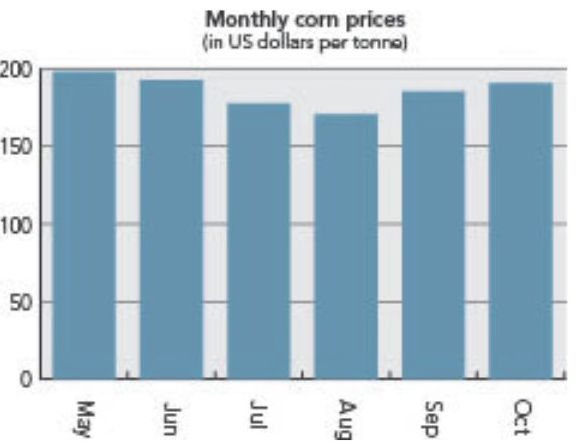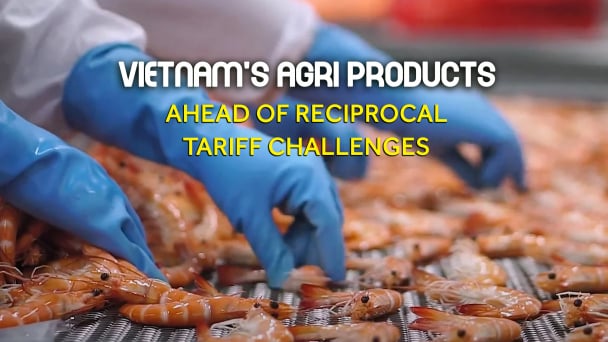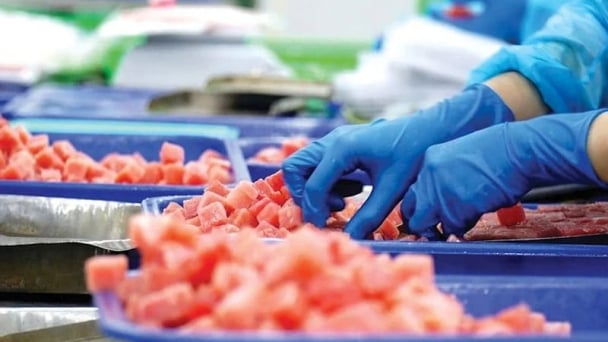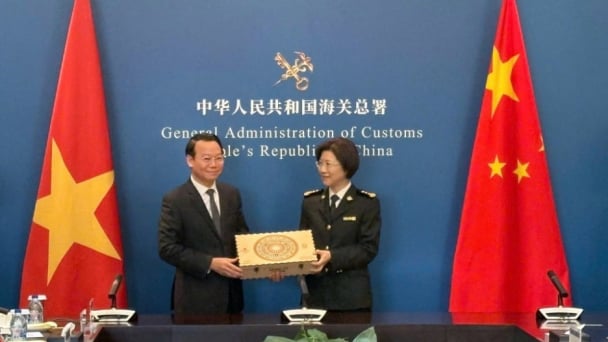May 31, 2025 | 09:39 GMT +7
May 31, 2025 | 09:39 GMT +7
Hotline: 0913.378.918
May 31, 2025 | 09:39 GMT +7
Hotline: 0913.378.918

Credit: ©SOSLAND PUBLISHING CO.
Solid export demand and a slightly bullish WASDE report meant a firmer maize (corn) market in November, taking sorghum up with it. A mixed picture left barley steady overall, while oats and rye were down. Geopolitical factors, notably the war in Ukraine, remain an issue for the market.
The International Grains Council (IGC), in its monthly Grain Market Report released on Nov. 22, said maize prices had risen by 3% in five weeks, “buoyed primarily by firmer US and South American fob values.”
“US maize futures rose by 6% overall, mainly on solid international demand, including from Mexico,” the IGC said. “Larger-than-anticipated cuts to US yield and production estimates in the November WASDE (USDA World Agricultural Supply and Demand Estimates report, released Nov. 8) were also mildly bullish.
“However, the uptrend was contained at times by seasonal harvest pressure and overspill from outside markets, including crude oil and currencies. Nearby fob values in Brazil (Paranagua) worked higher, drawing continued support from underlying solid demand from local ethanol processors. However, some weakening was evident more recently, as traders evaluated a more favorable planting outlook for the main safrinha crop.”
Markets in Argentina were “nominal at times amid limited fresh trading interest,” the IGC said, but “fob prices remained competitive,” while “in contrast to other origin markets, spot quotations in Ukraine eased on slightly softer export interest.”
The US Grains Council in its Nov. 21 Market Perspectives report pointed to launches by Ukraine of Western-made long-range missiles at targets in Russia, which triggered a rally in CBOT maize.
The IGC noted little change in barley prices, with “declines in the EU and Australia broadly balanced by gains in the Black Sea region.” French dollar-denominated export prices eased, “mostly reflecting muted buying interest, including from China,” while “values in Russia rose, likely on slow producer selling.”
Despite a drop in basis levels, US Gulf sorghum prices rose on the back of firmer maize (corn) futures, the IGC added.
“Gains in export premiums and strength in Chicago lifted export quotations in Argentina,” it said, noting that “values in Australia also firmed.”
“The US oats spot (December) futures contract declined by 9% month on month, mainly on losses in wheat,” the IGC said. “Despite some seasonal pressure, cash values in Australia (Kwinana) rose,” while “quotations in the EU (Finland) dropped on subdued buying interest.”
“Despite tight availabilities, physical rye values in the EU (Germany) declined, likely on subdued demand from the domestic milling industry,” the IGC said. “Nominal prices in Russia rose.”
The European Confederation of Maize Production (CEPM) has warned of the effect of the trade deal being negotiated between the EU and the South American Mercosur group of countries. Pointing out that 25% of EU maize consumption is imported, CEPM said that if the deal is signed, “this ratio is expected to rise, with one in three tonnes of maize being imported.”
“The EU in 2032 could lose 600,000 hectares of maize-sown land, while Brazil would gain 3.8 million,” the France-based group said. “The decline would also be significant for ethanol, with the draft agreement granting Mercosur an export quota of 650,000 tonnes, equivalent to a loss of 235,000 hectares for the European Union.”
CEPM said that for it to accept the deal, measures would be needed to ensure that maize imported from Mercosur had not been treated with substances banned in the EU. It said it also wants the Cerrado savannah zones added to the list of ecosystems covered by the European regulation on combating imported deforestation.
(WG)
/2025/05/30/5010-5-173638_943.jpg)
(VAN) On May 29, at the GO! My Tho Trading Center, the Tien Giang Department of Industry and Trade, in collaboration with Central Retail Corporation, held the opening ceremony of the 3rd Fruit Festival 2025.

(VAN) Reciprocal tariffs are exerting pressure on U.S. exports, prompting Vietnamese firms to shift their focus to Muslim markets, Thailand, and Brazil.

(VAN) A free booth for two years at Xinfadi, Beijing's largest wholesale market, will be allocated to Vietnam's agricultural products.

(VAN) Vietnamese shrimp exporters are actively looking for alternative markets and accelerating shipments to the United States in response to the pressure of impending reciprocal tariffs. This is occurring during a temporary tariff suspension.

(VAN) The import-export turnover between Vietnam and Singapore rose amid a trade rebound, with machinery, electrical equipment, and fuels making up the majority of the transaction value.

(VAN) Director General of the General Administration of Customs of China, Ms. Sun Mai Jun, has pledged to implement measures that will ease the import process for Vietnamese agricultural products.

(VAN) Although Vietnam is still increasing its coffee exports, the industry is currently in the process of determining market strategies in response to the U.S. imposition of reciprocal tariffs.